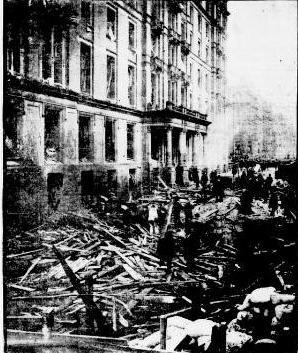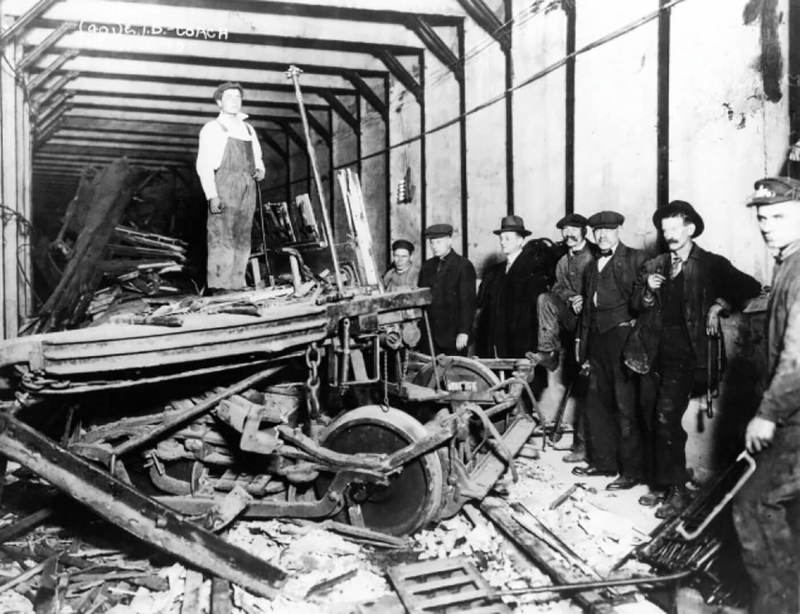Incidents
While the building and operation of the New York Subway system was a marvelous achievement, as with almost anything there will be problems and failures before something can be perfected. The railroad was no exception to this norm and for some people these failures proved fatal.
The first incidents that were documented to have occured were of course in the process of building the railroad. Since excavation of the ground was executed in such a rudimentary fashion accidents were bound to happen. In January of 1902, a shed of the explosives used to break up the ground detonated killing six people, injuring one-hundred, and caused damage amounting to over eight million dollars of property damage in today’s money. Two other major incidents took place in the actual excavation process. In March of 1902 a collapse of the tunnel under park avenue caused damages in the range of a million dollars equivalent to nearly thirty million dollars today. The last major construction incident occurred in October of 1903 when a tunnel collapsed on top of ten workers killing them all. This final accident was attributed to the lack of support present inside of the cave that they were working in at the time and led to the adoption of new support techniques for unstable areas. In all however, the death toll was surprisingly low relative to the size and danger involved with such a big task.
After the completion of the railroad, the public was eager to use the newly built system that was suppose to alleviate travelling problems within the city. The first few years went relatively smooth with only minor accidents occurring that caused no real harm, but with the subpar rail cars that the IRT was using, a feeling of impending disaster loomed and disaster finally struck in 1918. With the combination of the poorly built rail cars that were the same models that had been developed in 1904, and an inexperienced driver that was working due to a union strike, a crash occurred on a stretch of rail known as Malborne street. The inexperienced operator took a sharp curve at speeds reported to be around thirty to forty miles an hour and the speed limit for this particular curve was a measly six miles per hour. The cars derailed and hit the concrete supports that made up the framework of the tunnel, in all the accident claimed the lives of nearly one hundred people and injured over 200 more. The accident caused an uproar in the safety precautions taken in the subway system and begged the question of why hadn’t the railcar been updated to the faster and safer railcars that had been developed in 1915. The accident is the deadliest transit accident in the history of New York City still to this day.
The next major incident that occurred in the New York subway system took place in 1991. The accident occured on the Lexington Avenue line around midnight when the train going upwards of thirty miles per hour over the speed limit flew off of the tracks and slammed into the support beams once again. In this instance the wreck killed only five people, a major improvement due to the new cars that were made out of high strength steel and designed to manage impacts. However, the wreck was still the most deadly incident that had occurred since the catastrophic Malborne Street crash sixty or so years earlier. The cause of the accident in this case was that the motorman (control the speed of the train and its stops) running the train that night was severely intoxicated. Overshooting many of the stops preceding the crash, some people actually exited the train early due to the erratic behavior of the train operator. Robert Ray, the motorman was convicted of manslaughter and sentenced to fifteen years in prison, but much speculation then arse around the events leading to the accident and the knowledge of many of the people working for the subway system that he was constantly drunk on the job.
Reference List

